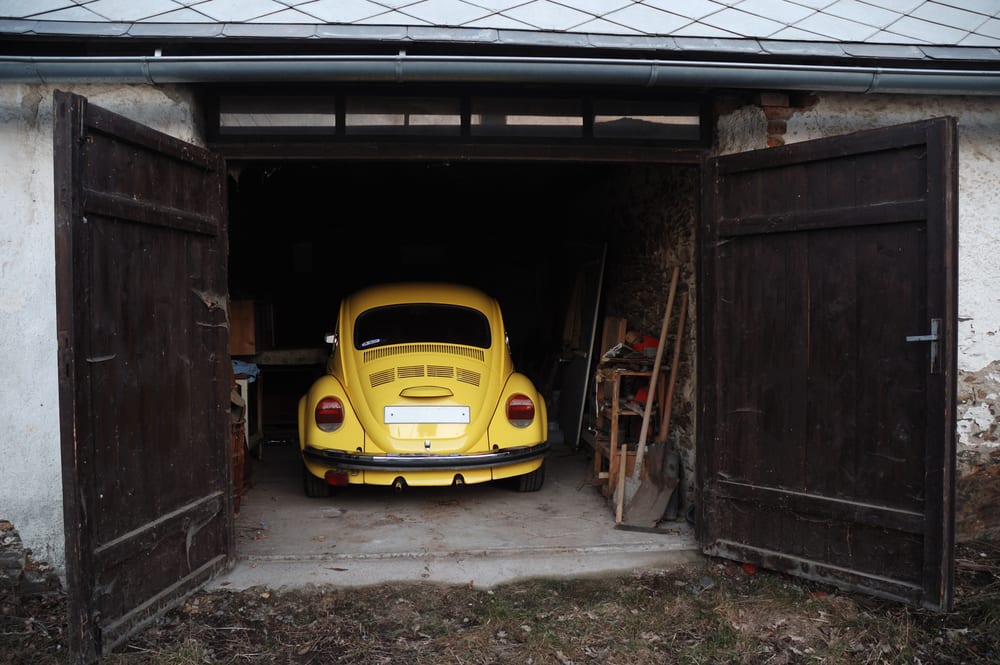COVID-19 was something we just didn’t see coming, let’s talk about the practical things that you can do while you’re at home to make sure that your car doesn’t let you down when you need to start using it again. Complex machinery relies on regular use, movement and/or lubrication to ensure that it doesn’t seize, corrode or perish. And because we don’t know how long this is going to last – there’s a few things you can do
Get indoors
The best thing you can do for your car’s longevity is get it out of the elements. Rain, dust, smog (although it must be said that there’s less of that at the moment), bird dirt and sunshine will conspire to ruin your pride and joy. So if you have a garage, now would be a good time to use your house-bound time to clean it up and get your car settled inside. If you don’t have a garage or shed big enough to house your motor, then car ports, awnings, fixed shade cloths, creatively arranged parasols or appropriated mainsails will offer some protection.
Cleaning Outside
Normally, we’d recommend a full wash before putting your car away for storage. All the nasty particles and chemicals that sit on the paint, the underbody and various very important components are, in an ideal scenario, not still attached to your car when it goes into storage. But, as this pandemic has wrongfooted roughly everyone, we’d wager that one of the last things you thought to do was give your car a thorough wash.
So, do what you can to remove the worst of the muck. Use car detailing products or gentle home cleaners like glass cleaner or dish soap to clean things as best you can.If all you have is water, use your judgement – if you try to rinse and then wipe dry a properly dirty car, all you’ll end up achieving is a series of tiny scratches in the paintwork caused by the dust and grime dragging across the top coat.
If you’re fortunate enough to be able to properly clean and dry your car, capitalise on said luckiness by applying a coat of wax to protect your precious metal.
Cleaning Inside
If you have special ‘protecting’ wipes and creams, we’d urge caution against using them just before storage. There are a lot of chemicals in the cloths and lotions that are meant to be wiped off by bums on seats or hands on steering wheels, or let off gases in sunlight. You don’t want these chemicals to sit on your car’s interior bits for months at a time.
Wipe the dust and gunk off surfaces with a damp cloth and then drying with a dry cloth is probably the most you’ll need to do to keep your trim in good nick, if it’s out of the elements. You can lather it with all sorts of creams and salves when you pull it back out of storage, but, for now, keep things simple.
Disinfecting
You’ve probably seen a lot of articles about disinfecting the most-used touch points on your car. And if you’re going to continue to use your car, absolutely do this – disinfect the steering wheel, handles, gearstick, handbrake, seatbelt buckles and anything else that comes into contact with human hands. Then, as a matter of priority when you get to work or home, wash your hands with soap and warm water, lathering for at least 20 seconds and ensuring that you’ve scrubbed every part of your hands. That’s just self-preservation at the least.
Electrical Items
Your best bet is to buy a battery tender, also known as a battery maintainer or conditioner – these stay attached to the battery and the wall socket, using an onboard processor to maintain the battery’s charge and condition. The better ones come with special reconditioning modes, if you want to ensure your battery is in the best nick it can be first, then keep it on a smart charge. Alternatively, you can keep it maintained during your driving sabbatical and then recondition the battery before your first triumphant re-emergence onto the road.
Modern cars have a plethora of sensors and computers that need battery power, but do a good job of not drawing too much current.
If you drive an electric car, take this opportunity to fully charge your car and leave it plugged in. Onboard systems can manage the charge level and ensure the battery remains in top condition – you won’t constantly be drawing charge. Smarter chargers can be set up to draw a tiny bit of charge late at night when the tariffs and usage are low.
Tyres
They lose air pressure over time, as all tyres do, so pump them up to the recommended pressure for a heavy load. That way, when you coax your car out into the world again, you’re not damaging your rims with underinflated tyres. You’ll also reduce the likelihood of flat-spotting tyres if they’re well-inflated.
So, you might be tempted to just jack up the pressure, but we’d advise against it. Don’t ever inflate past the manufacturer’s maximum cold inflation pressure, which will be written on the sidewall of the tyre.
Brakes
If you leave your handbrake on for a long period of time, it can seize, so chock the wheels and release the handbrake. Leave an automatic car in Park and a manual car in gear. If you’re properly worried that you may have to tow the car in the future, you might be tempted to put the car in neutral and rely on the chocks. But this makes your car as easy to steal as simply pushing it out onto the road and hooking it up to a tow truck.
